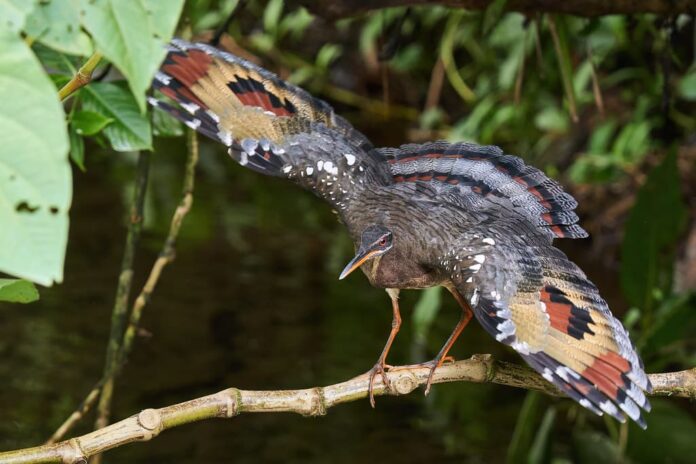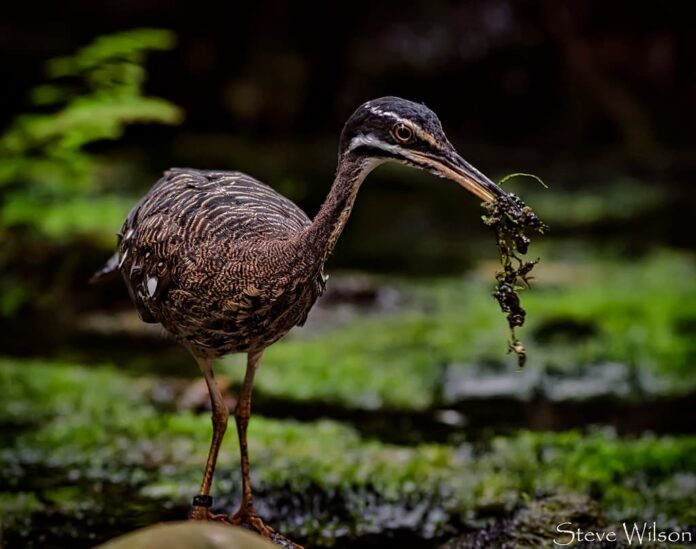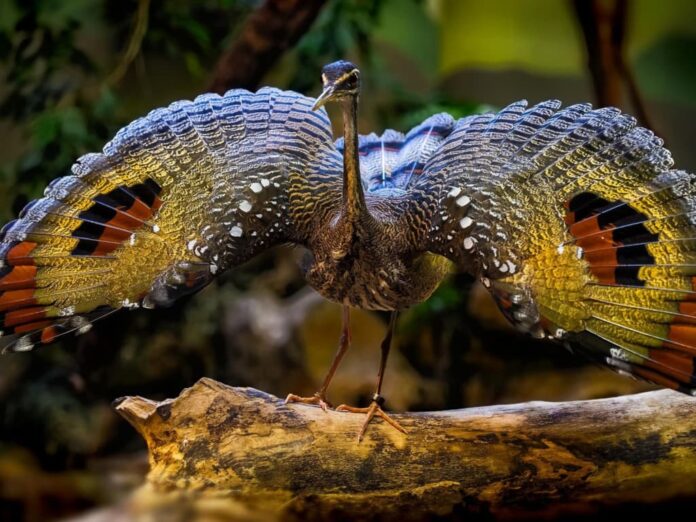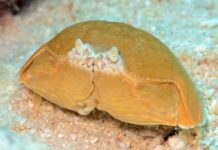Sunbittern, the bird with a unique name and a dazzling look that we can’t take our eyes off of. The slow and elegant walk that this bird has is one thing, and those stunning wings are another thing. Such a gorgeous bird, but people don’t talk about them enough so here I am. If you haven’t seen or heard of one, this is definitely the right place for you to find out more.
1Appearance

Looking both attractive and basic at the same time, the sunbittern is one of an interesting kind. Height-wise, it stands around 50 to 60 centimeters tall. A sunbittern has a stout body with a small head, a slender neck, a long bill, and long legs. Covering its stout body is a full and soft mottled plumage of black and brown along with some white marks. Its head is nearly all black with white stripes above and below its blood-red eyes. As for the breast and shoulders, they are brown in color.
While the overall color is pretty basic, there is something unique about this bird. Simply because the moment a sunbittern spreads its wings, the show begins. Under that brown plumage is an orange-chestnut patch near the tip of each wing that they use for defending themselves. The combination of black, red, and yellow creates a pattern that resemble eyes when a sunbittern fully spreads its wings. This striking appearance is for both keeping the predators away and mesmerizing mates during the breeding season.
2Behavior
Sunbitterns walk a lot for birds, and they spend most of their time walking slowly on the ground. But the grace is revealed when they fly; that elegant movement and slow wing beats say it all. These birds normally fly and perch in high trees when threatened, and then they will unfold their tails and wings. Revealing the patches of bright chestnut and orange is one of their ways of scaring the intruders away. Sunbitterns can also let out a low hiss along with a bow movement while displaying their intimidating colors.
As for their daily life, they usually hang out individually or in pairs, being in large flocks is not common. It is always a breeding pair when you see two of these birds together because both parents take turns incubating the eggs and hunting. During the first two weeks after the eggs hatch, the male and female sunbitterns protect and feed their chicks. One of the most fascinating things about them is that they have the habit of washing their food before eating it. They do it more often when they are feeding their young, very cool, right?
Around two weeks later, the parents can leave the chicks alone for several hours to hunt for food. They do not leave their nest unattended, and either parent will use their defense mechanism known as the “broken wing” display if the predator approaches. A sunbittern will drag one wing on the ground as if it is broken to distract the predator. This is to keep the chicks in the nest safe by appearing injured and helpless.
3Feeding & Habitats

Not different from medium-sized birds out there, this one also feeds on amphibians, crustaceans, fish, and insects. They forage among rocks on the forest floors, or in vegetation along the stream banks. Thanks to their long necks and spear-like bills, quickly striking their prey is a piece of cake for these wading birds. The cool part is that sunbitterns are one of the 12 bird species that use baits or lures to attract prey.
Sunbitterns are native to tropical habitats in Guatemala and Northern Brazil, living in foothills, lowlands, and well-wooded banks of creeks and streams. While their population is doing well, their numbers are decreasing due to habitat loss. Their most common predators are birds of prey, caimans, and snakes while chicks and eggs are vulnerable to small mammals and snakes.
Related Post: Things You Don’t Know About Black Herons




